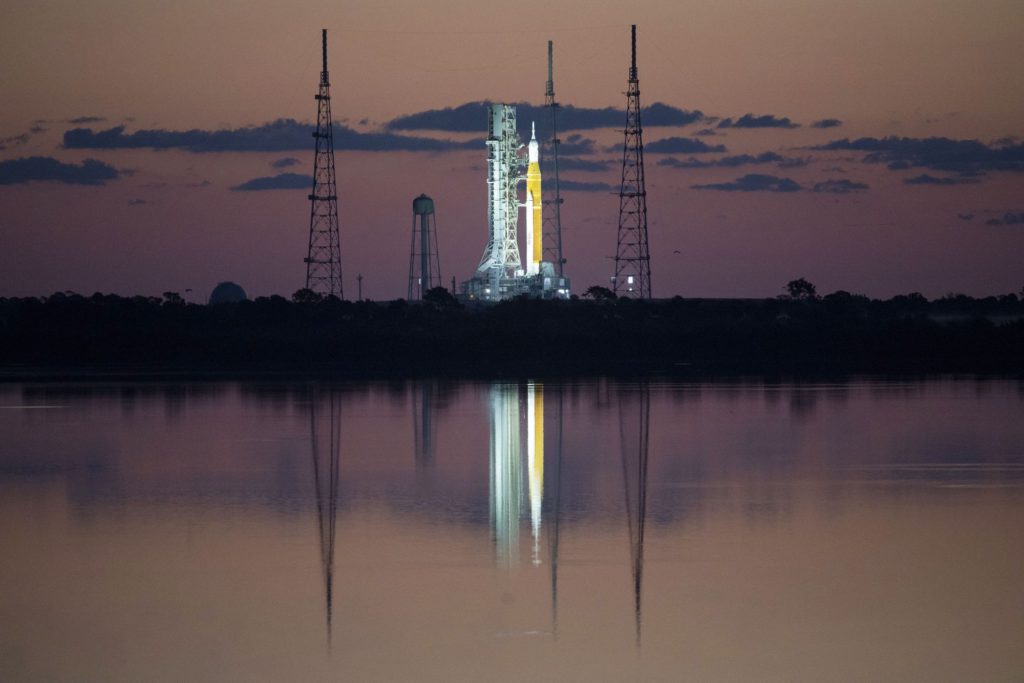NASA’s latest rocket demonstrated one of the biggest and most enduring frustrations that comes with launching new and highly complicated space technology: waiting.
(Bloomberg) — NASA’s latest rocket demonstrated one of the biggest and most enduring frustrations that comes with launching new and highly complicated space technology: waiting.
Though expectations were high for Monday’s scheduled first launch of NASA’s new Space Launch System rocket, or the SLS, the space agency was careful to temper expectations ahead of the planned lift-off. It emphasized that this was a test flight and that engineers were still learning how to work with the still-untested rocket.
“The complexity is daunting when you bring it all into the focus of a countdown,” said Bill Nelson, administrator of the National Aeronautics and Space Administration.
Ahead of Monday’s event, experts within the space community also downplayed the odds of the SLS actually flying on schedule. Still NASA gave it the agency’s best shot — and Vice President Kamala Harris flew in to be on hand — before an issue with one of the four main engines triggered a scrub.
But the truth is such problems are not uncommon for new launch vehicles, especially ones as big and as complex as the SLS — and NASA has been here before. The first Space Shuttle launch way back in 1981 was scrubbed and delayed before it finally lifted off. And risk-averse NASA would rather hold a launch than fly with an anomaly its engineers would have been unable to fix once the mission was under way.
“Welcome to spaceflight,” Stan Love, a NASA astronaut, said after the scrub. “It’s going to be even more exciting for the crew if they come down and then decide not to go.”
The earliest available opportunity to try again is on Sept. 2, which Mike Sarafin, NASA’s Artemis mission manager, said in a press conference was “definitely in play.” No decision has been made on rescheduling.
Official confirmation of the delay came after the space agency spent the early morning hours investigating issues including a potential crack in material in the main body of the rocket as well as the temperature issue, officials said earlier Monday. Those came after engineers examined and resolved a suspected leak affecting the hydrogen tanking process.
One of Four
During the countdown, the SLS’s engines need to chill down in preparation for launch. But one of the four — Engine 3 — was not cooling properly. Engineers weren’t able to test the process during the rocket’s final dress rehearsal due to a hydrogen leak. Engineers also discovered a leak in a valve in one of the rocket’s tanks. The engine and the valve issue ultimately prompted the abort.
Artemis relies on RS-25 engines made by Aerojet Rocketdyne Holdings Inc., all of which were previously used on various Space Shuttle missions.
The Artemis mission will be the first major flight in NASA’s ambitious plan to send the first woman and the first person of color to the lunar surface as early as 2025. Artemis I is aimed at testing out the components of the Space Launch System: The core rocket made by Boeing Co., and the side boosters made by Northrop Grumman Corp. A new deep-space crew capsule called Orion developed by Lockheed Martin Corp. will also get a try out.
If Artemis I is able to launch on Sept. 2, SLS will be sending Orion on a mission of more than five weeks, along with a host of payloads and sensors to track the journey. The length of the mission will vary depending on the launch date.
The capsule is tasked with inserting itself into lunar orbit and entering deep space before return to Earth in the Pacific Ocean off San Diego. NASA plans to stress test the systems ahead of later crewed missions.
Five Years Behind
The Space Launch System already is more than five years behind schedule. It has been in development for roughly a decade, slowed by a myriad of delays and cost overruns. Development costs of the program have soared from an original $7 billion to about $23 billion, according to an estimate by the Planetary Society.
If successful, the Artemis program — named for the twin sister of the god Apollo in Greek mythology — will see the return of people to the moon for the first time in 50 years. No one has visited since Apollo 17 in December 1972.
More stories like this are available on bloomberg.com
©2022 Bloomberg L.P.











